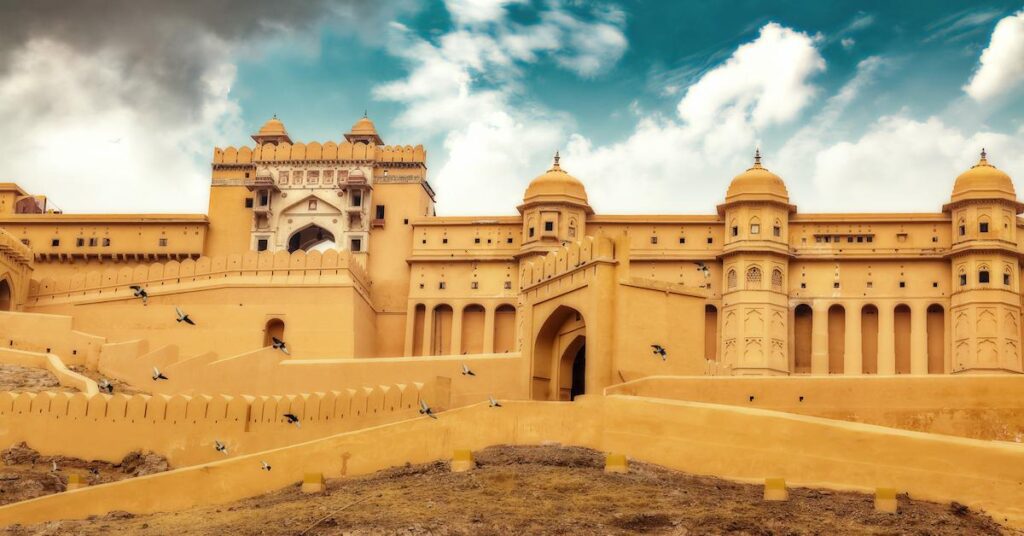Amber Fort also called the Amber Palace, the stronghold is situated on a slope in Amer, Rajasthan. Only eleven kilometers from the city of Jaipur, the Amber stronghold is a significant vacation spot. Worked by Raja Man Singh, the stronghold, which is likewise spelled as Amber post, is a beautiful wonder. It remains on top of an effectively adaptable mountain, which is arranged right close to the lovely Maota Lake.


Credits: itinari
History of amber fort
Raja Alan Singh, who once controlled the Chanda group of the Meenas, was presumably the main ruler to at any point go to Amer. He set up his luxurious royal residence on top of the slope, which presently holds the Amber Post, and began to manage his subjects in the new town. He named his town Khogong. At some point, an elderly person with a kid moved toward Raja Alan Singh, looking for shelter in his realm.
The lord took them in kindly, and, surprisingly, brought up the kid who was named Dhola Rae. Dhola Rae was then shipped off to Delhi to spread the tradition of the Meena realm. Rather than submitting to his ruler’s requests, he returned with his very own little multitude, which included Rajputs. The Rajputs then killed everybody having a place with the clad of Meenas, without offering them any indication of kindness. It is said that the slaughter occurred upon the arrival of Diwali when the Meenas were leading an extraordinary custom known as ‘Pitra Trapan.’
Back then, it was standard for the Meenas to save every one of their weapons while performing ‘Pitra Trapan.’ The Rajputs, who knew about this training, exploited the circumstance and made Khogong their own. This demonstration of theirs was considered as quitter and disgusting. The town alongside the wonderful slope that held the luxurious royal residence-like post presently had a place with the Kachwaha Rajputs.
Construction of amber fort
The construction of Amber Fort was begun in 1592. It was altered on normal stretches by a few rulers and the pattern went on up until late 1600. The stronghold was for the most part developed utilizing red sandstone and white marble. However essentially a stronghold, it likewise filled in as the fundamental home of the Rajput Maharajas.
Consequently, in its resulting changes, the stronghold was purposely made to seem to be a luxurious royal residence. There is additionally another royal residence, which was developed before the development of the Amber stronghold. The more established royal residence lies in a valley behind the stronghold. This castle is quite possibly of the most seasoned in Indium.
Architecture of amber fort in India
The Amber Fort Architecture style of the post is a mix of Mughal and Rajput designs. One of the most mind-blowing instances of this style inside the post is the Ganesh Pol. Mirza Raja Jai Singh, who managed the spot from 1621 to 1627, was instrumental in building the Ganesh Pol. The Amber Fort door is decorated with mosaics, which makes it look brilliant and great.
Among the fundamental attractions of the stronghold are Jai Mandir and Sheesh Mahal. While the Sheesh Mahal has walls trimmed with dazzling mirrors, the Jai Mandir, holding tight to the upper floor, is a heavenly mix of Mughal and Rajput styles of design. This is clear from the richly cut Jali screens and plaster work. Jal Mandir has a gigantic opening which is covered with sandalwood entryways.
Conclusion
The stronghold, alongside five different fortifications of Rajasthan, was named one of the UNESCO World Heritage Sites in the year 2013. This castle complex was utilized as the primary home of the Rajput Maharajas for an extensive time. Golden Post is related to a rich history that includes injustice and carnage.
Credits: Traveling Mondays
